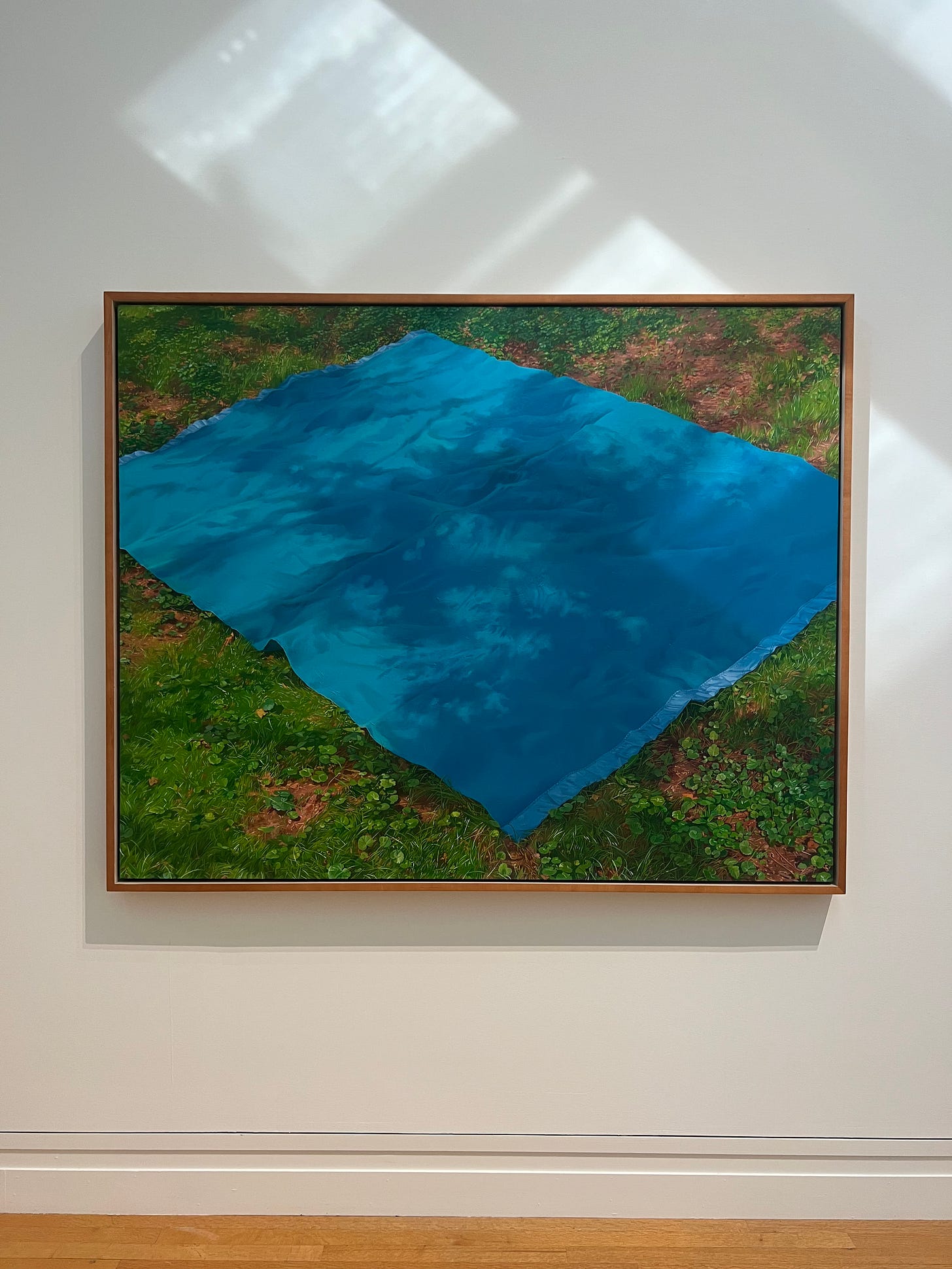“The Blue Blanket,” Catherine Murphy, 1990, The Metropolitan Museum of Art
Standing before “The Blue Blanket,” I fall asleep, and wake up as the girl in the dream.
The Girl is about to settle onto the blanket she’s laid in the grass. It’s a sleepy summer day and there’s nothing to do but read and eat a snack and gaze up at the leaves blowing through the thin branches of the trees. Sunlight filters down, kissing her face, and her skin holds its warmth. Her eyes close and orange sun spots dance behind the black of her eyelids.
Easy sleep, like the way you experience eyes closed dreaming as a child on a summer day, is this exact shade of blanket blue. It’s not Joni Mitchell’s Blue, or the misty Blue nights that Didion describes. This shade of blue is a memory that you can never come home to again — suspended in the tactile world of ticket stubs, museum quiet, 5pm closing times. In the realm where the blanket is laid, home exists eternally, unchanging. The painted scene pulls you into the dream. Remember how the grass felt dry and warm, under your small bare feet.
“One isn’t alone in a garden,” Marguerite Duras wrote. Waking on the blue blanket in the grass, The Girl is wholly alone, but never lonely. She is enjoying the peaceful content of communion, with herself and the world around her, through rituals of worship, the objects she has packed for the day. She unearths them from her bag, and lays them down with care: the book that is her bible, a story she reads over and over, and an apple to bite later.
“What ever happened to the girl I knew?” Lana sings in Buddy’s Rendezvous. I hear this in my earbuds walking around New York, thinking about the form of myself that is in the painting forever, the form that exists eternally.
“You are the most you you’ll ever be at the age of six,” my childhood friend says at dinner, red wine drunk, her cheeks flushed. “Did you know that?”
Plato’s theory of the forms: Everything has an eternal shape that exists in the ether, and we understand the true form of things by recreating their likeness in images here on earth. There is the form of a chair, and then there is the chair that a carpenter makes. There is the form of Beauty, and then there are your hands. There is the idea that time is not linear, that its true form bends and tears and intersects through the cosmos, and then in a quiet corner of the Met there is “The Blue Blanket” by Catherine Murphy.
In the way that there is comfort in prayer, and in places of rest and mourning, where you can lay cut flowers on cold stone, there is comfort in knowing where the forms of Home, and Love, and Memory can be found. The form of the Girl I Knew lives in the painting.
Heaven is here, too: laying on my back I reach my finger up to the blue sky above and touch it. The words that I use to describe Angels come from afternoons spent in the garden with the sleepy breeze. Blanket in tow I’m six and twelve and nine, you’re alive, she’s alive, he’s reading me a story. I fall asleep in the car, someone carries me through the door. Standing before the painting, and after, I take the tear in time I see with me, I’m writing my way around it now.
The Girl I knew lives in the dream, her palms rest down on the grass and she feels eternal in the green. I’ve never slept again like the girl I knew who woke up from a nap on the blue blanket on a summer day.





